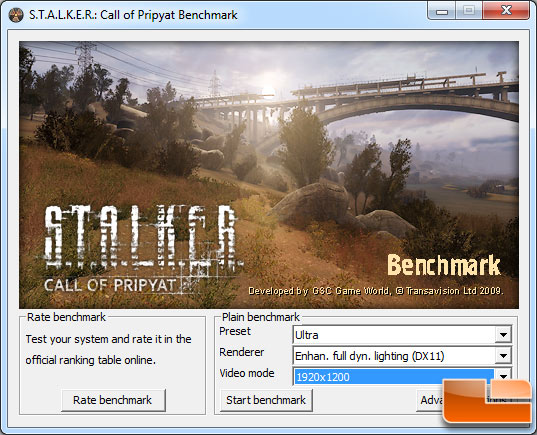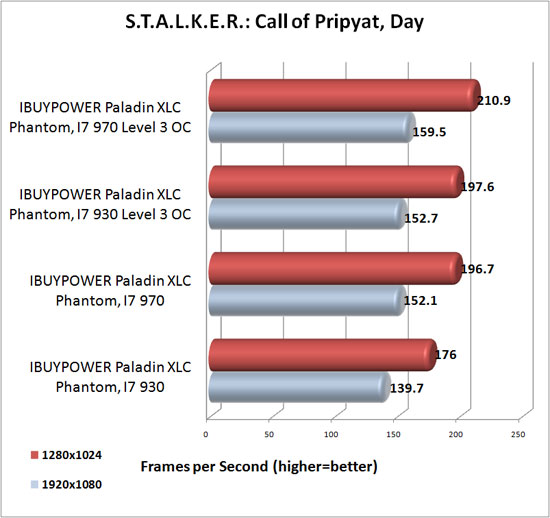IBUYPOWER Paladin XLC Phantom Series System Review
S.T.A.L.K.E.R.: Call of Pripyat

The events of S.T.A.L.K.E.R.: Call of Pripyat unfold shortly after the end of S.T.A.L.K.E.R.: Shadow of Chernobyl following the ending in which Strelok destroys the C-Consciousness. Having discovered the open path to the Zone’s center, the government decides to stage a large-scale operation to take control of the Chernobyl nuclear plant.
S.T.A.L.K.E.R.: Call of Pripyat utilizes the XRAY 1.6 Engine, allowing advanced modern graphical features through the use of DirectX 11 to be fully integrated; one outstanding feature being the inclusion of real-time GPU tessellation. Regions and maps feature photo realistic scenes of the region it is made to represent. There is also extensive support for older versions of DirectX, meaning that Call of Pripyat is also compatible with older DirectX 8, 9, 10 and 10.1 graphics cards.

The game S.T.A.L.K.E.R.: CoP has no internal benchmarking tools built into the game engine, but they do have a standalone benchmark available that we used for our testing purposes. The screen capture above shows the main window of the benchmark with our settings. Notice we are running Enhanced Full Dynamic Lighting “DX11” as our renderer.

Benchmark Results: All of the systems were able to run the S.T.A.L.K.E.R. Call of Pripyat with relative ease. Results match what we have seen for most of the day with the processor with the most cores and highest frequency taking the top spot. Although, as pointed out here, this benchmark is not threaded very well so frequency will play a much more important role. The Intel Core I7 970 has been running with turbo enabled which will put it only 180MHz slower than the overclocked Intel Core I7 930.

Comments are closed.